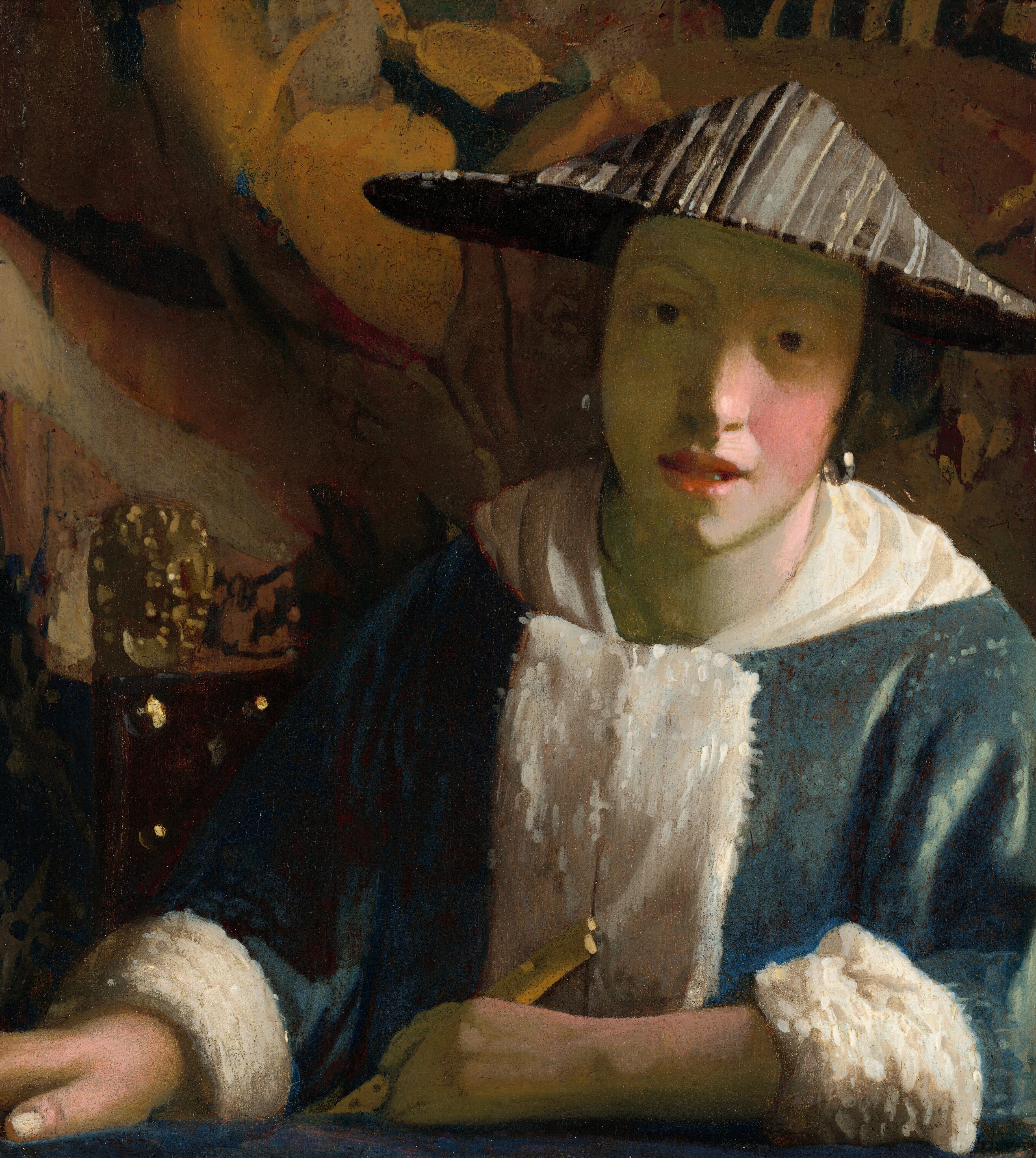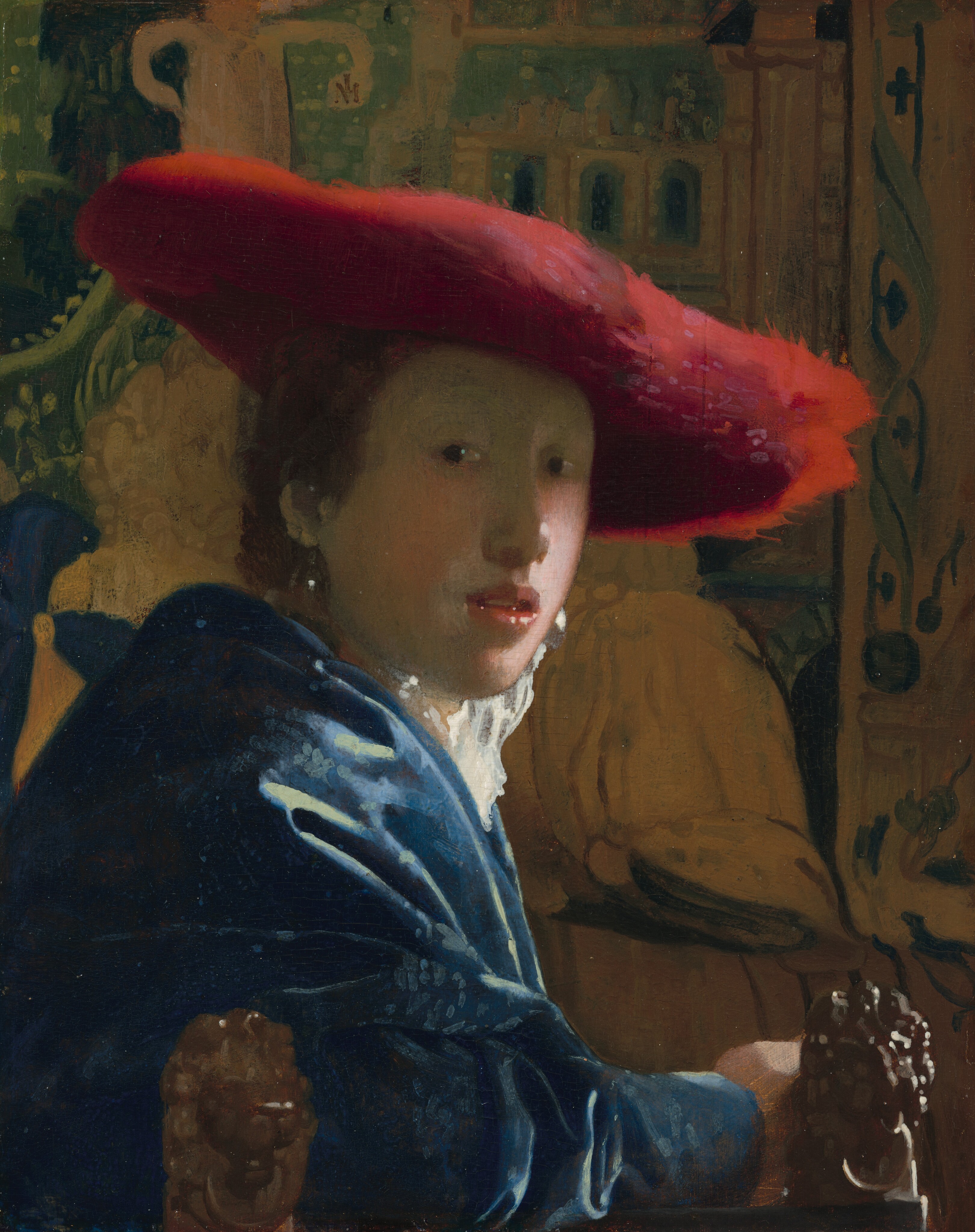The National Gallery of Art in Washington reported in 2022 that one of its Vermeers was being downgraded to a studio work, possibly even a forgery. After extensive scientific analysis on the six 'Vermeers' in their collection the museum re-established the authenticity of three, and confirmed as forgeries two works which had long been recognised as such, as well as re-attributing Girl with a Flute. The painting had been in their collection since it was donated as a genuine Vermeer in 1942, although its authenticity has always been disputed by scholars. According to the gallery, their new analysis has shown that, whilst the painter was clearly familiar with Vermeer's techniques, they 'lack the skill or experience to reproduce them'.
Vermeer is unusual as an artist, in that very few of his works are known - 35 in total - and it is generally thought that he worked slowly, and alone, producing relatively few paintings over the course of his career. The suggestion that this is in fact a studio work offers a new perspective that, for at least some of his career in Delft, Vermeer did employ assistants. The gallery has speculated that these may actually have been family members, perhaps his daughter Maria, who would have been in her late teens when the work was supposedly painted (c.1669-75), but this seems rather tenuous.
Johannes Vermeer, Girl with the Red Hat c.1669, National Gallery of Art Washington
The painting is similar in style to Girl with the Red Hat, which uses the same model, and a similar close-up composition in which the figure looks out of the canvas with an open-mouthed, ambiguous expression. Both paintings are very loosely painted, with Vermeer's characteristic white highlights visible blobs on the surface and paint application clearly evident throughout the varied colouration and texture of the costumes. Both exploit strong directional lighting from an unseen left-hand source. Both images juxtapose large primary colour blocks, off-set by areas of white, and emphasise the shallow picture space with a fussy background of tapestry or draperies. It is this which sets them apart from the simplicity of Girl with a Pearl Earring (1665), a work which nonetheless has other obvious similarities. All three fall into the category of tronie - figurative works which show off the artist's skill - rather than being specific examples of portraiture. Girl with a Flute sits comfortably within Vermeer's work on a number of levels. Images of musicians are common; the fur-edged blue dress is similar to that in Woman Holding a Balance (1662-5); she wears tear-drop pearl earrings; the lion's head decorated chair features in a number of paintings.



No comments:
Post a Comment